Are you struggling to distinguish “customer experience vs customer service”? Understand that customer experience is the end-to-end journey customers embark on with your brand, shaping long-term relationships. On the other hand, customer service deals with specific instances of customer assistance. This article will debunk their differences and demonstrate why mastering both is critical for success.
Key Takeaways
-
- Customer experience (CX) is the emotional connection and overall journey with a brand, while customer service focuses on targeted support for product discovery, usage, and troubleshooting.
-
- Investing in customer experience vs customer service is crucial for fostering customer loyalty, repeat business, and increasing revenue through better retention and satisfaction.
-
- While related, CX and customer service differ in scope, approach, and measurement, with CX influencing every interaction and customer service addressing specific needs; these require different strategies to enhance and different metrics to measure success.
Defining Customer Experience vs Customer Service
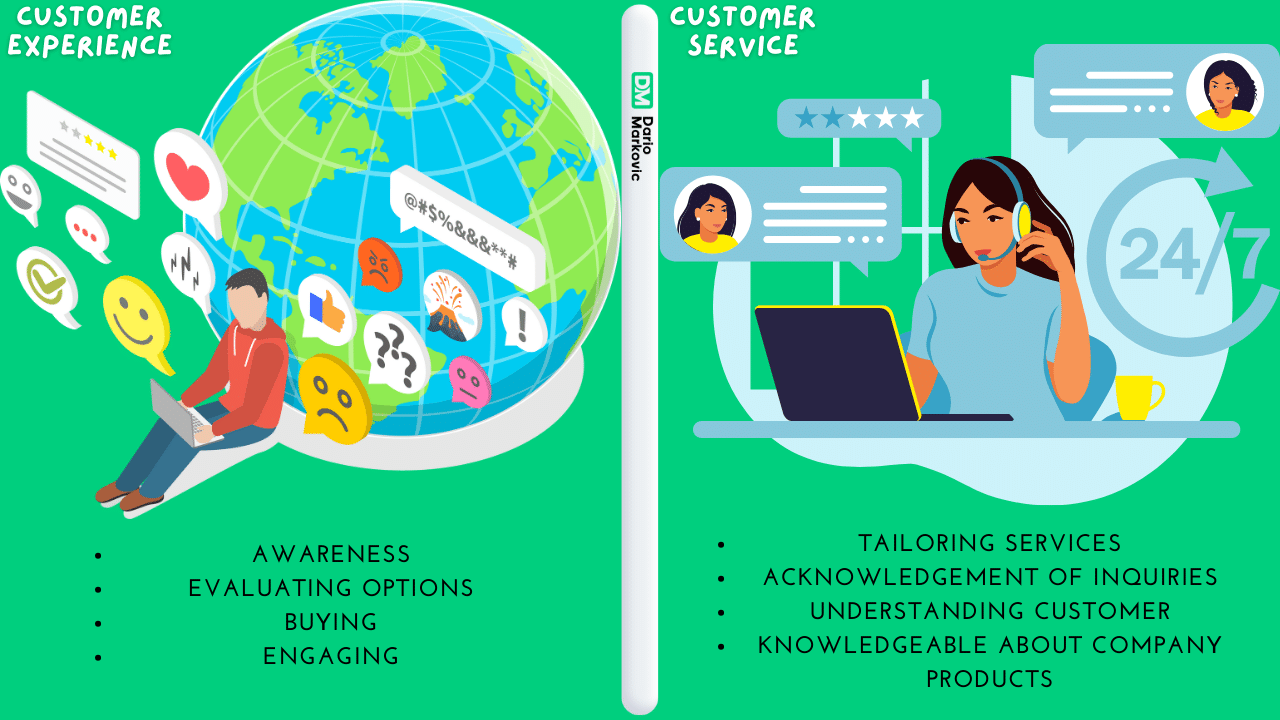
Essentially, customer experience (CX) represents the interactions between a business and its customers across the purchasing process. It covers all instances where a customer comes into contact with a brand, centering on their emotional reactions to that interaction.
On the other hand, customer service is an integral part of CX, which involves aiding customers through exploration, utilization, and problem-solving related to products or services. The customer service team provides specialized assistance that addresses issues during the consumer’s experience to ensure customer satisfaction.
Customer Experience
The concept of customer experience is all-encompassing, involving the complete path a client takes with a company from their initial discovery to subsequent interactions after making a purchase. The ultimate objective here is to create strong emotional ties with customers, which will help to bolster loyalty towards the brand. Customer’s cumulative experiences throughout various phases, including:
-
- becoming aware
-
- evaluating options
-
- buying
-
- engaging after purchase
They are integral parts of their overall perception and relationship with an organization.
Every member within an organization is responsible for providing an outstanding customer experience. At the same time, essential internal functions like billing and supply chain management are key components that contribute significantly to establishing a seamless encounter for clients. There must be uniformity across all platforms where interaction occurs, such as:
-
- retail outlets
-
- online sites
-
- social media profiles
-
- telephone services
To ensure what could truly be described as positive engagement on behalf of consumers, businesses should wholeheartedly incorporate considerations related to customer experience into every aspect of consumer-related activities while adopting advanced analytical tools aimed at consistent optimization and refinement.
Customer Service
The provision of support and assistance to customers, which is given before they make a purchase, while the transaction occurs, and after they have bought an item or service, involves communication via multiple channels such as telephone conversations, email correspondence, and online messaging. Several key features can identify exemplary customer service:
-
- Tailoring services to individual needs
-
- A swift acknowledgment of inquiries
-
- Displaying an understanding of customer situations
-
- Attentively listening to concerns
-
- Making decisions quickly
-
- Possessing in-depth knowledge about products and company policies
Conversely, substandard customer assistance can leave patrons dissatisfied and harm the perceived value of a business.
Building emotional rapport with clients helps greatly in settling their issues swiftly with outstanding solutions that raise trust levels toward the brand name and its overall standing.
What does good customer service mean to you? Teams dedicated to providing service should prioritize improvements by crafting goals using the SMART criteria (specificity-measureability-action orientation-relevance-time-bound) alongside actively requesting feedback from those they serve.
The Importance of Both Customer Experience and Customer Service
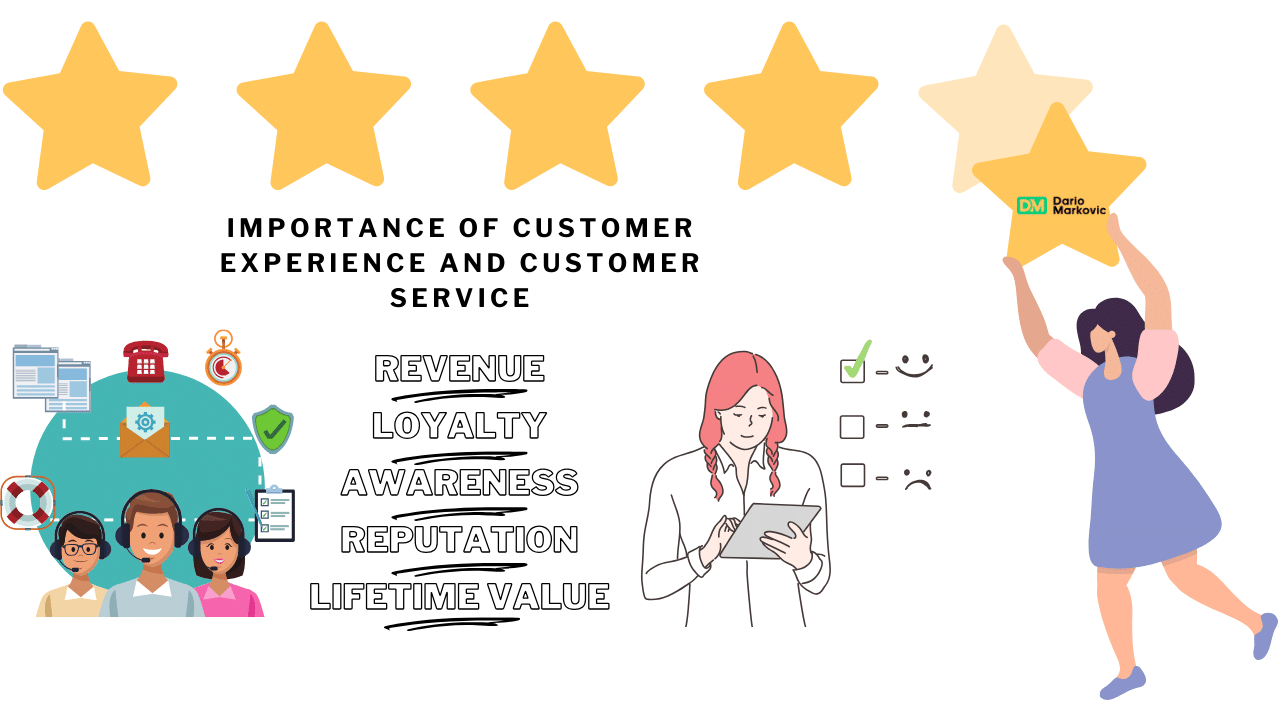
Both customer service and the broader customer experience are essential elements in a strategy focused on the customer. By delivering an outstanding customer experience, businesses can ensure their customers feel happy and fulfilled, which promotes loyalty to the brand and drives successful outcomes for the company.
In parallel, exceptional customer service encourages ongoing patronage from customers by playing a critical role in achieving their satisfaction.
By integrating aspects of both service and overall experience into every interaction with customers, companies have chances to impress them positively while also mitigating issues that might otherwise lead to losing those customers.
Committing resources towards enhancing both focus areas—service and customer experience—can result in higher consumer satisfaction. This not only elevates the public perception of one’s brand but may also reduce the rates at which customers stop using your services or buying your products.
Impact on Revenue
Delivering outstanding customer experiences and top-notch service has the potential to unlock numerous opportunities for a business, such as:
-
- Cross-selling additional products or services
-
- Up-selling more premium offerings
-
- Fostering customer advocacy that promotes your brand
-
- Attracting new customers through referrals
A modest enhancement in keeping just 5% more of your existing customers could dramatically boost revenues from 25% to an impressive 95%. This highlights how crucial high-quality customer service is in terms of financial outcomes.
Conversely, it’s essential not to overlook the ramifications of poor customer experiences. They often result in a significant loss of clientele, and one lousy review disseminated online can immediately harm a company’s expansion. Thus, monitoring vital indicators like the rate at which customers leave versus stay becomes pivotal for informed decision-making that directly affects revenue generation within a firm.
Building Brand Loyalty
In the current competitive business climate, fostering brand loyalty is essential. Providing personalized service that makes customers feel important and acknowledged is critical to strengthening their bond with the brand.
Outstanding customer service marked by sincere efforts to solve problems and demonstrate concern can significantly influence customer satisfaction, transforming potentially harmful situations into positive outcomes and promoting customer loyalty.
Forming a dedicated team to ensure success among clients can help prioritize their needs, leading to enhanced satisfaction and increased fidelity and retention rates.
Efficient recovery strategies for handling unsatisfactory service experiences show the company’s dedication to sustaining favorable relations with its clientele. Such interactions effectively turn unhappy customers into loyal brand advocates.
Key Differences Between Customer Experience vs Customer Service
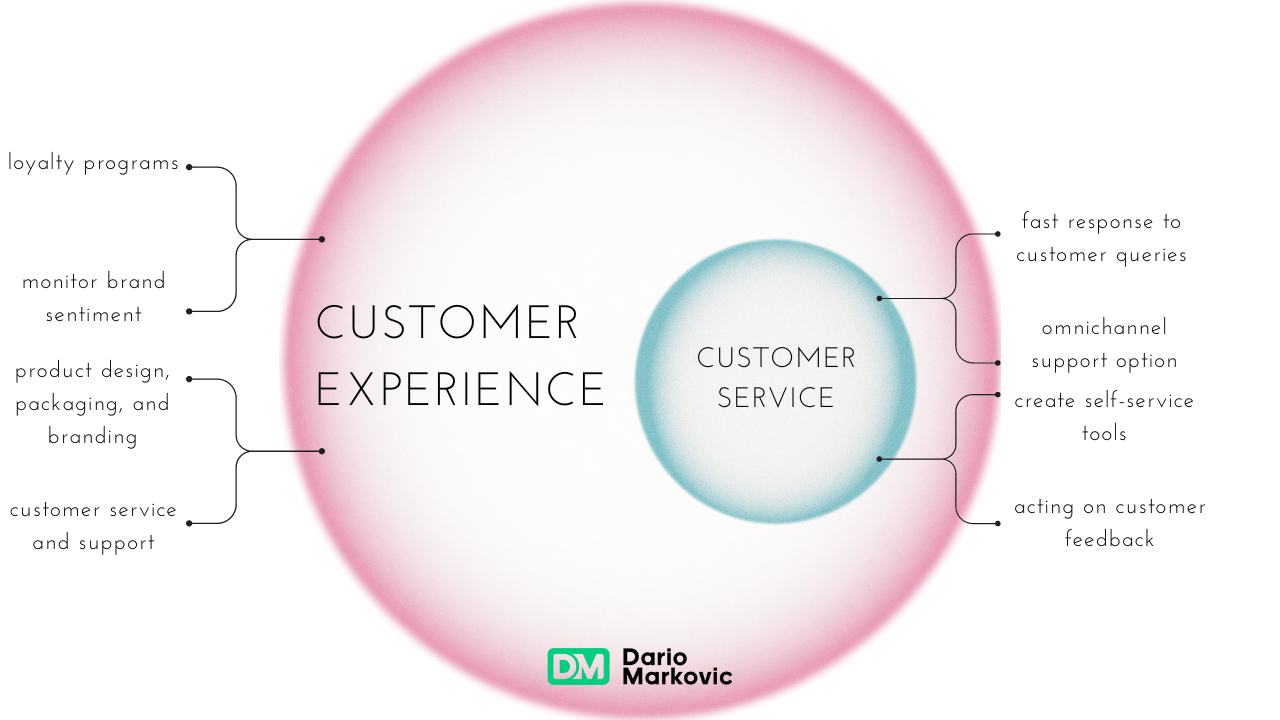
Understanding the customer journey requires appreciating the customer experience and service, though they are distinct in a company’s strategy.
The former is comprehensive and considers every interaction along the path customers take with a brand, proactively shaping these touchpoints. In contrast, customer service explicitly addresses immediate issues or needs that arise for customers, reacting to situations as they occur.
Metrics used to gauge success in delivering excellent experiences and services differ due to their distinctive roles in engaging with customers.
While factors like poor customer service can cast a shadow over how easy it feels for customers to deal with a company – potentially souring their overall impressions – this underscores how interconnected yet separate good experience management and adept service are when molding customer perceptions.
Scope
The customer experience represents the sum of all customer interactions with a brand throughout their journey, from the initial engagement to the period after making a purchase. Each point at which customers come into contact with the brand – navigating its website, engaging with staff members, or utilizing a product – shapes their overall perception.
Conversely, while incredibly important in this process, customer service is just one aspect of creating an exceptional customer experience.
It concentrates on providing human support and direct help for consumers when needed. Ensuring smooth experiences that require minimal effort across various points apart from these direct engagements in service settings can greatly minimize customers’ need to seek additional assistance.
Approach
The customer experience involves taking preventive measures to recognize and cater to customers’ needs, enhancing their perception of the brand. It is vital to employ journey mapping and soliciting feedback to anticipate customers’ expectations and prepare for forthcoming demands and preferences.
On the other hand, customer service has a transactional essence that concentrates on addressing individual inquiries or problems brought forth by customers when they arise, typically via direct interaction. It is part of a customer service rep’s role to react following incidents like complaints or questions from the customer.
Measurement
Customer service efficiency is measured using key indicators that capture the essence of direct engagements between customers and those providing the service. Scores like Customer Satisfaction (CSAT) and Customer Effort Score (CES) evaluate how content customers are in real time and how effortlessly they can interact with services.
Meanwhile, metrics that reflect the broader scope of customer experience, such as Customer Lifetime Value (CLV) and churn rate among consumers, offer a window into enduring relationships with brands and overall satisfaction levels.
Additional measures, including revenue churn rate, monthly active users statistics, and cohort analysis, contribute to a more sophisticated comprehension of the customer’s individual experiences and comprehensive effectiveness in offered services.
Real-World Examples of Customer Experience and Customer Service

Studying real-world customer experience and service tactics implementations can help one better understand their effectiveness. Businesses like Zappos, Apple, and Ritz-Carlton have set high customer service standards that significantly boost customer satisfaction and loyalty, spurring company expansion.
These industry leaders have not merely raised the bar for customer satisfaction. They’ve consistently transformed improved customer care into superior business results, giving them an edge over competitors.
Customer Experience Success Stories
Companies that deliver outstanding direct interactions with customers cultivate enhanced customer experiences that contribute significantly to customer satisfaction and loyalty. Sainsbury’s, for example, adopted the name ‘giraffe bread’ after a 3.5-year-old customer’s letter, a responsive and playful act that resonated with customers and the public.
In another example, The Ritz-Carlton hotel went to great lengths to reassure a young customer about their lost toy, demonstrating impressive care and creating a memorable customer experience. These examples highlight how companies that focus on delivering exceptional customer experiences can foster strong customer loyalty and satisfaction.
Customer Service Triumphs
Delivering good customer service that surpasses what customers anticipate is the hallmark of exceptional customer care, cultivating customer contentment and fostering lasting loyalty.
For example, Warby Parker: when an executive noticed a lost pair of glasses, they not only returned them but also included a new set with a personally written message, leaving an indelible impression on the recipient. This act embodies great customer service—interchangeable with terms like exceptional—wherein customers are treated to an experience beyond their expectations.
Another illustration of commitment to ensuring satisfaction came from Zappos. They went above and beyond by sending out a replacement pair of shoes via overnight delivery after an error in shipping regarding footwear intended for use at a wedding. These stories exemplify how brands can elevate their reputation and nurture robust ties with consumers through exemplary dedication to providing excellent service.
Tips for Improving Your Customer Experience and Customer Service
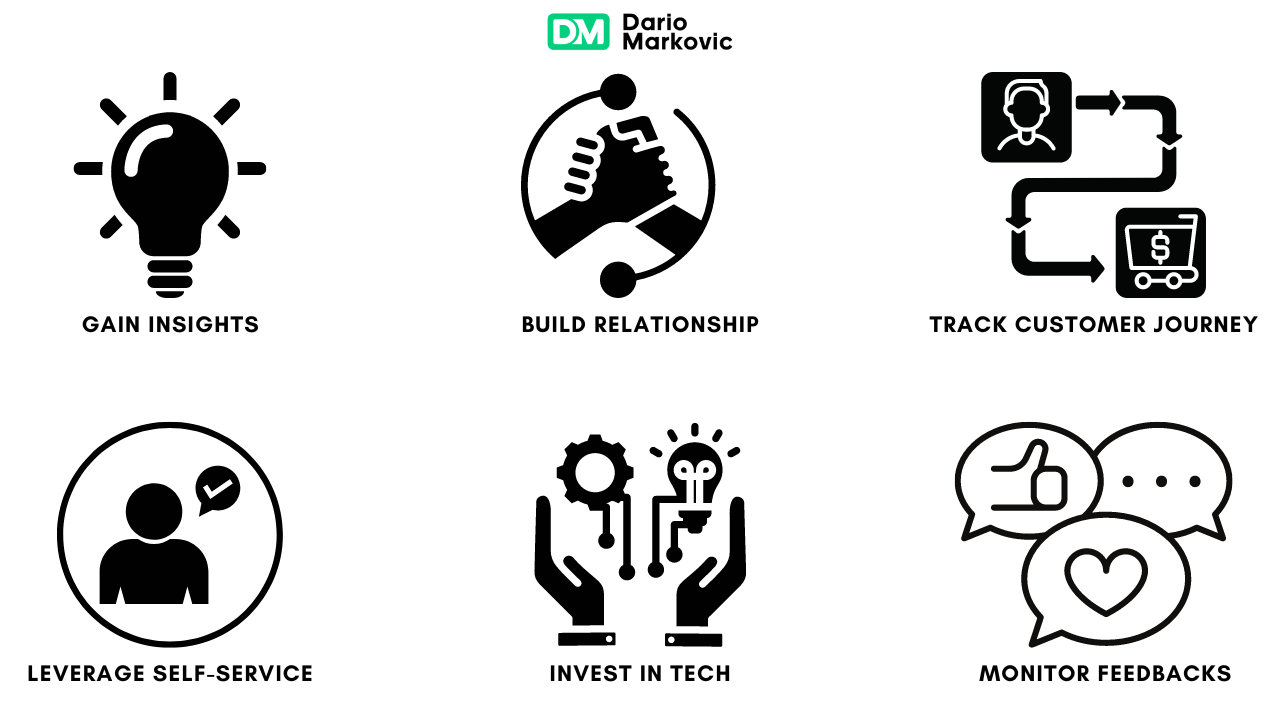
Improving the customer experience and service involves an integrated approach that encompasses gathering feedback, equipping employees with greater authority, and leveraging technology. These tactics can significantly strengthen a company’s engagement with its customer base and favorably impact its financial performance.
Gathering Customer Feedback
Gathering customer feedback is essential to comprehending the customer journey and improving the overall customer experience. It’s a key factor in crafting personalized experiences that align with each customer’s needs and desires.
This feedback is a resource for professional growth within customer service teams by shedding light on their performance and which aspects require refinement. While it may be challenging to receive negative comments, such insights are indispensable as they pinpoint exact areas where the customer experience suffers, enabling precise advancements.
Empowering Employees
Establishing a culture focused on the customer within organizations is crucial because it enables employees to focus their efforts and resources on enhancing the overall customer experience. By providing employees with appropriate tools and resources, businesses can ensure they offer exceptional customer care, which is instrumental in retaining a competitive advantage.
Efforts made towards refining the customer experience have been shown to boost employee engagement by an average of 20%, highlighting how vital empowering staff members is for elevating business outcomes.
Utilizing Technology
Equipping a customer service rep with knowledge management tools improves their ability to retrieve essential information quickly. Integrating AI and automation in customer service, primarily through chatbots, facilitates rapid and adept handling of routine customer queries.
Customer service software aimed at enhancing the customer experience, alongside CRM systems, harnesses interaction data to tailor a bespoke entire customer journey for customers across multiple points of engagement.
Cutting-edge technologies, including virtual/augmented reality, screen-sharing capabilities, and comparison instruments, provide customers with engaging previews of products and interactive assistance that significantly uplifts their overall experience.
Measuring the Success of Your Customer Experience and Customer Service Strategies
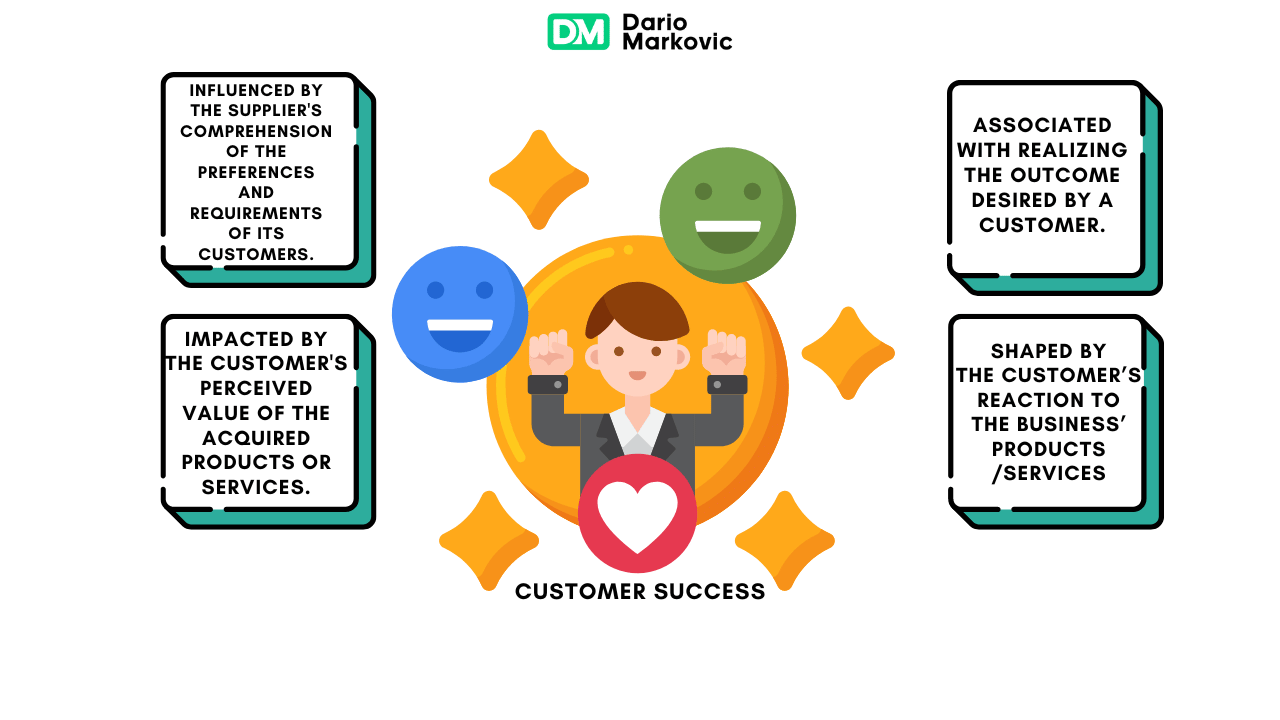
Evaluating the effectiveness of customer experience and service strategies is crucial for businesses prioritizing their customers.
Businesses frequently rely on established indicators such as CSAT (Customer Satisfaction Score), CES (Customer Effort Score), and NPS (Net Promoter Score) to gauge their success in delivering these experiences and services.
Metrics like CLV (customer lifetime value), churn rate, and retention rate offer a deeper understanding of the nuances of customer interactions. These key performance indicators yield essential information regarding how customers perceive their experiences, thereby assisting companies in adjusting their approaches more effectively to fulfill customer expectations and requirements.
Key Performance Indicators (KPIs)
Measuring the efficacy of initiatives to enhance customer experience is critical, and this is where Key Performance Indicators (KPIs) come into play.
For instance, the Net Promoter Score (NPS) gauges how likely customers are to recommend a company, reflecting their loyalty. In contrast, the Customer Satisfaction Score (CSAT) ascertains immediate contentment following a customer service interaction or transaction.
To quantify the gains from delivering exceptional customer experiences, various KPIs monitor aspects such as:
-
- The level of satisfaction among customers
-
- Retention rates
-
- Degrees of customer loyalty
-
- Increases in revenue
-
- Diminished costs associated with providing customer service
These indicators serve as concrete benchmarks for assessing how well a company’s strategies around customer experience perform. They lay the groundwork for ongoing enhancements and precise adjustments to those strategies.
Analyzing Data
Firms must adhere to a systematic approach to effectively deploy analytics focusing on customer experience.
- Define explicit goals
- Choose relevant data points
- Sort out, scrutinize, and take action based on insights
- Craft and perfect strategies aimed at improving the customer experience
The process of analytics in customer experience entails gathering and examining customer data to understand their interactions and behavior across different contact points.
Businesses can achieve several outcomes by harnessing analytical techniques centered around customer information.
-
- Identify initial signs of client discontent.
-
- Take initiative by engaging dissatisfied clients early on to avoid loss (churn)
-
- Increase the frequency of repeat purchases through custom-tailored promotions.
My Thoughts on Customer Experience and Customer Service
In summary, customer experience vs. service concepts are closely linked yet uniquely defined with different scopes and ways to measure them.
Both elements play a pivotal role in fostering robust customer relationships, propelling business growth, and securing an advantage in today’s competitive market.
By understanding these ideas, soliciting customer feedback, appropriately equipping staff members, and effectively leveraging technology, companies can markedly improve their customer experience and service strategies.
Ultimately, the goal is to craft unforgettable experiences that not only please but also retain customers by encouraging repeated engagements with the business.
Frequently Asked Questions
Customer experience as a service encompasses all aspects of the customer journey and involves delivering superior experiences, value, and growth for customers. It includes planning, designing, and executing activities, often managed by a third-party partner.
The primary distinction between a customer-oriented and client-oriented service lies in interaction: customers are involved in single transactions to fulfill immediate needs, while clients partake in sustained business engagements to address multiple requirements over time.
Customer experience management (CEM) centers on cultivating a favorable experience to reinforce customer loyalty, whereas customer relationship management (CRM) aims to enhance interactions to strengthen customer relationships. The concept of customer experience entails a comprehensive perspective, in contrast to the focus on enduring ties inherent in managing customer relationships.
CX, or customer experience, pertains to customers’ overall perception of a business, encompassing every interaction and touchpoint. On the other hand, CS, meaning customer success, focuses on the outcomes achieved through those interactions with customers. Nevertheless, there are noticeable commonalities between both concepts despite their differences.
Both the customer experience and service provided by a business are crucial elements that play a significant role in improving customer satisfaction. These aspects help cultivate loyalty and contribute substantially to increasing revenue and achieving business success. They aid in establishing and maintaining a favorable brand reputation.



